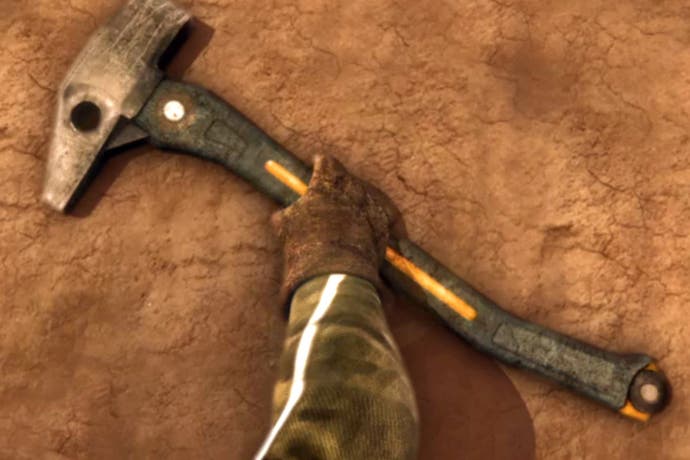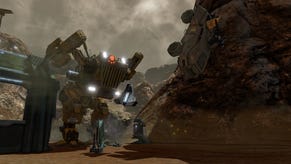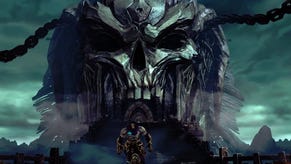Red Faction: Guerrilla was an open-world game with purpose
Smashing stuff.
Open world games are hard to make, but it's even harder to make them about something. When a game's scope spreads across tens, maybe hundreds of virtual square miles, it's not surprising that developers can struggle to fill that space. Who can forget collecting feathers in the first Assassin's Creed, or Unity's unique approach of pouring every kind of content imaginable into Revolutionary Paris, as if Ubisoft was making virtual foie gras?
When you've got such a broad canvas, the temptation is to go wild with all the paints on your palette. The problem with this is when you mix every colour, you inevitably end up with brown. This is why so many open-world games end up stuffed with racing mini-games or mediocre crafting systems. You've got to chuck a lot of stuff in there before they feel full, and it takes enormous talent and teamwork to make the resulting experience feel like anything other than a random assortment of activities and filler.
This is why I have such a fondness for Red Faction: Guerrilla. It's an open-world game driven by a singular purpose. Granted, that purpose can be summarised as "smashing stuff to bits", but I never said the goal of an open world had to be noble or high-minded. It just has to somehow unify its components, and Guerrilla does this extremely well. It's a prime example of a developer figuring out what their open world is about first, then building the rest of the game around that idea.
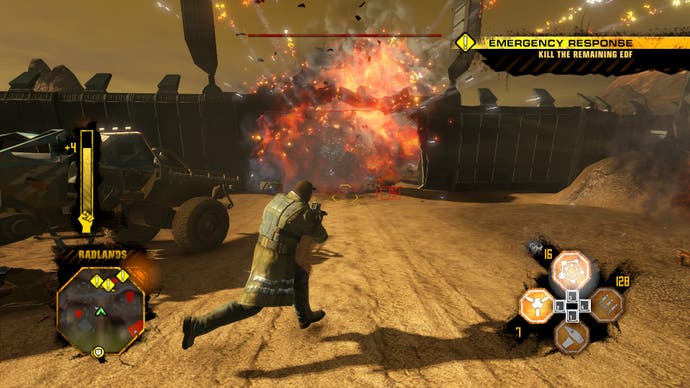
In fairness, Volition Studios had something of an advantage over other open-world developers, namely the two Red Faction games that preceded Guerrilla. It knew that a Red Faction game would have to focus on destruction of some variety. It is the defining characteristic of the series, after all. Yet even here Volition showed an unusual level of focus and restraint. Any other developer would have said "Let's make everything destructible" and happily let the player spend 30 hours shooting rockets at brown hilltops. Volition wisely realised that this would have been phenomenally boring, and instead restricted the destructible environment to manmade structures only.
It's worth noting that at the time this was a controversial decision, which looking back seems like madness, as it's what makes Guerrilla work as an open world game. By switching the destructive focus from the terrain to buildings, Volition instantly provided themselves with a blueprint for the layout of their open world. Wherever there were buildings in the world, there was potential for action. All the studio needed to do was figure out the reasons behind that action.
Again, the series' legacy helps here. Red Faction's overarching narrative is essentially the Russian Revolution displaced into a sci-fi setting. At least, the bits before the whole oppressive, genocidal dictatorship thing kicked in. Naturally Guerrilla followed this format, casting players as Alec Mason, a pretty nondescript white male protagonist who becomes a major player in the Red Faction after his brother is executed by the ruthless Earth Defence Force.
The story as a whole is about as substantial as the skin on a rice-pudding, with little in the way of thematic nuance or compelling character work. That said, it certainly has pace on its side. For an open-world game, Guerrilla plays fast, keeping you constantly on the move, and minimising elements like cutscenes or inventory management that might otherwise slow the game down. And frankly, that's exactly what you want from an action game.

Ultimately, the story only exists to provide the action with some context. The real motivation for the player occurs at a systems level. Salvage is the game's currently - used to buy and upgrade new weapons and equipment, it's obtained primarily by smashing stuff. The other primary system that guides the players actions is, fittingly, control, which represents the the EDF's grip on Mars' various regions. Mason has to liberate these regions from EDF control in order to progress the story. This can be depleted by smashing , or by completing side missions, many of which involve - you guessed it - smashing stuff.
It helps that the act of smashing stuff feels great. Just spiffing, in fact. The risk with constructing your world to be destroyed is that it could end up feeling flimsy and insubstantial. But Guerrilla's buildings have a tangible weight and presence to them. Communicated through a wizardly blend of sound, physics and particle effects - Guerrilla sells the act of destruction to the player brilliantly. Even simple actions such as knocking a hole in a wall with your hammer has a satisfying crunch to it, the masonry cracking and crumbling in thick, rebar-strewn chunks.
When you break out the remote charges and level an entire building, the edifice collapses in a thick cloud of dust, resulting in a jumble of steel beams and metal panels. As the game progresses, it encourages more surgical demolition, introducing the matter-eating nano-rifle that lets you target specific areas of buildings to dissolve. Often you're doing this demolition work while embroiled in combat, fending off soldiers and armoured vehicles. Indeed, there's no sweeter moment in Guerrilla than triggering a charge that collapses a building and scatters a squad of EDF.
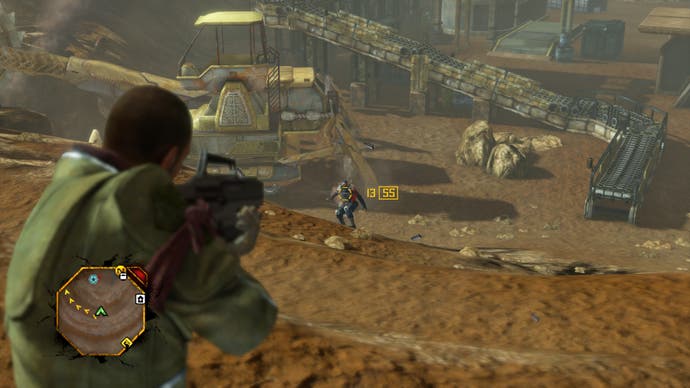
As someone who has played a lot of open world games, Guerrilla is also filled with plenty of smaller ideas that I really appreciate. Some missions, for example, instruct you to tail a particular vehicle, requiring you to stick close but not too close to your target. Missions like these are often fiddly and annoying because it's unclear what the right distance is. But Guerrilla uses the minimap to demonstrate clearly the space behind the target vehicle you need to stick to maintain the tail. The navigational aides are also smartly designed. Blow up a bridge, for example, and your virtual satnav will adjust to accommodate for this new obstacle in future.
I have a real fondness for games with a simple surface that demonstrate sleek and brainy design underneath. The surface here is very simple, however. Admittedly, Volition made life difficult for themselves setting the game on Mars, which isn't exactly known for its terrestrial diversity, and there is some attempt at variety through districts like the lush Oasis and the more urbanised Eos. Compared to say, the beautifully desolate world of Avalanche's Mad Max, however, it's plain to see that Guerrilla's environments haven't aged well. The combat is also pretty creaky by today's standards, a flaw that persists through much of Volition's work.
I've played enough blandly gorgeous open-world games in my time, however, so I'll happily take Guerrilla as it is over the alternative. Its destruction mechanic remains state-of-the-art, and the way Volition make it the focal point helps provide Guerrilla with a sense of identity and direction that shines through its dreary landscapes. There may have been larger and prettier open world game developed since Guerrilla, but few of them let you shape that world as comprehensively as this Martian revolution.
